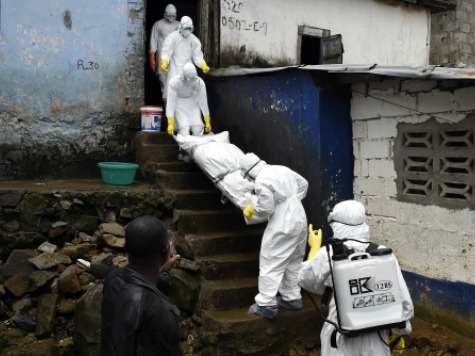The head of Liberia’s Environmental Protection Agency stated this week that the EPA has “nothing to do” with disposing of hundreds of bodies of Ebola victims as communities near the Boys Town crematorium protest that officials have provided little to no information on where the ashes are going.
In a bombshell report in Liberia’s Front Page Africa, EPA head Anyaa Vohiri confesses that her agency has had little luck in tracing the path of remains of Ebola victims from the hospital through the end of the cremation process. “Actually, we’re having a challenge right now determining where the ashes are going,” she said, adding, “Simply because, if the ashes are being buried, somewhere, where they’re not being buried according to the guidelines, it can be problematic.”
While the EPA is responsible for ensuring that cremated remains do not result in contaminated soil in communities, they also have a responsibility to ensure that the process by which Ebola waste is managed does not result in the threat of further exposure of communities to the Ebola virus. Scientists widely agree that burning Ebola remains–even the bodies of animals like bats which can spread the virus if ingested–is a sure way to kill the virus, yet Vohiri appeared concerned about the cremation process being properly, thoroughly implemented so no viral remains that are dangerous to humans are left.
Even more troublesome, reports have circulated that those heading the Ebola remains cremation operation near the capital, Monrovia, are returning the ashes to family members. In response to reports that cremation efforts leader Ciatta Bishop was returning ashes to families, Vohiri said:
We have to be careful where we’re putting the waste from it, be it solid waste or liquid. This is why we have to be careful where we’re putting the ashes. … If she said that I’m going to have to ask from the EPA, where and how it’s done, because we have to monitor to see where it is going and if it’s in a home, it could possibly cause other problems.
Cremation centers are not especially common in Liberia, as most follow elaborate African burial traditions that involve family members engaging the bodily fluids of the disease. The government has banned many of these burial processes in response to the wildfire spread of the Ebola virus, as it became increasingly apparent that individuals were contracting Ebola through participating in burial rituals. Boys Town is one of the few communities equipped with a crematorium, and residents have expressed horror at the possibility of Ebola victims’ ashes being strewn across their community.
“Many here are affected psychologically and what we are asking for is the relocation of the crematorium by the Liberian government,” community chairman Albert Reeves told the Liberian Observer. “Whenever the human bodies are being burnt in the morning and in the afternoon, there are huge explosions and everyone here can feel the ground itself shaking.” He also noted that importing necessary goods has become more difficult, as merchants refuse to sell to Boys Town to avoid potential contact with Ebola victims.
As of October 27, Liberia has cremated an estimated 1,700 bodies of Ebola victims. The World Health Organization is reporting that, as of the end of October, 4,951 people throughout the world have died of the Ebola virus, mostly in Liberia and Sierra Leone. The organization has also warned that this number is significantly lower than the actual death rate, due to the inability of local governments to reach many of the most devastated communities.

COMMENTS
Please let us know if you're having issues with commenting.